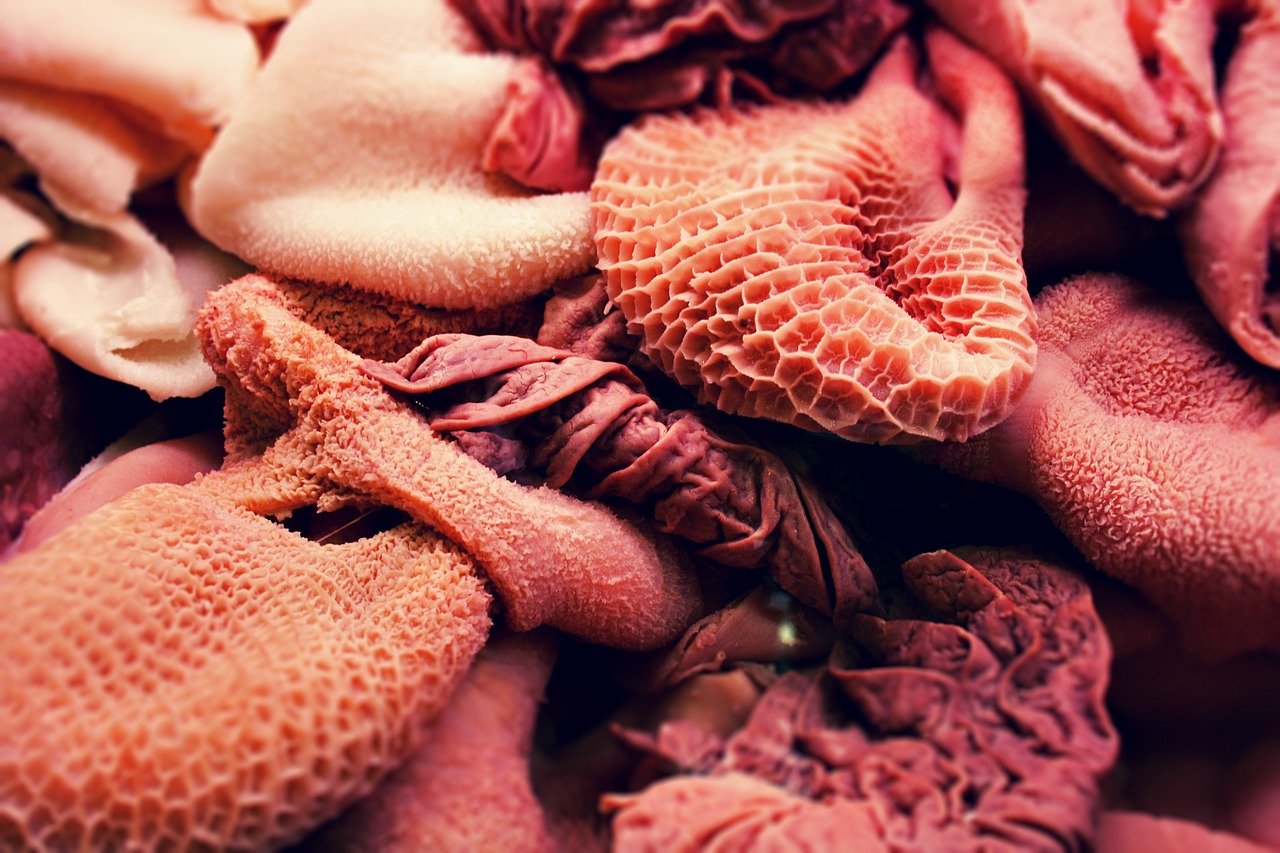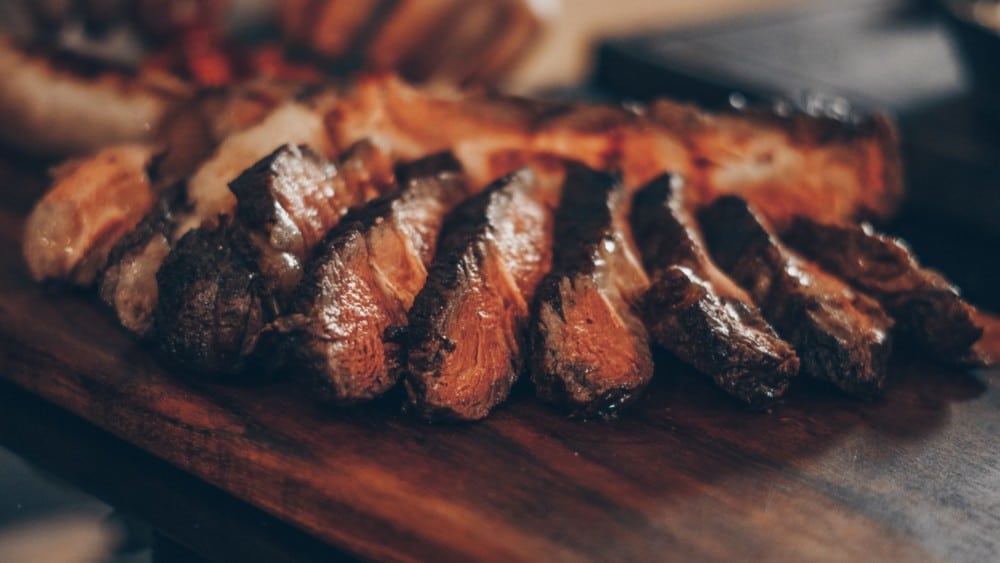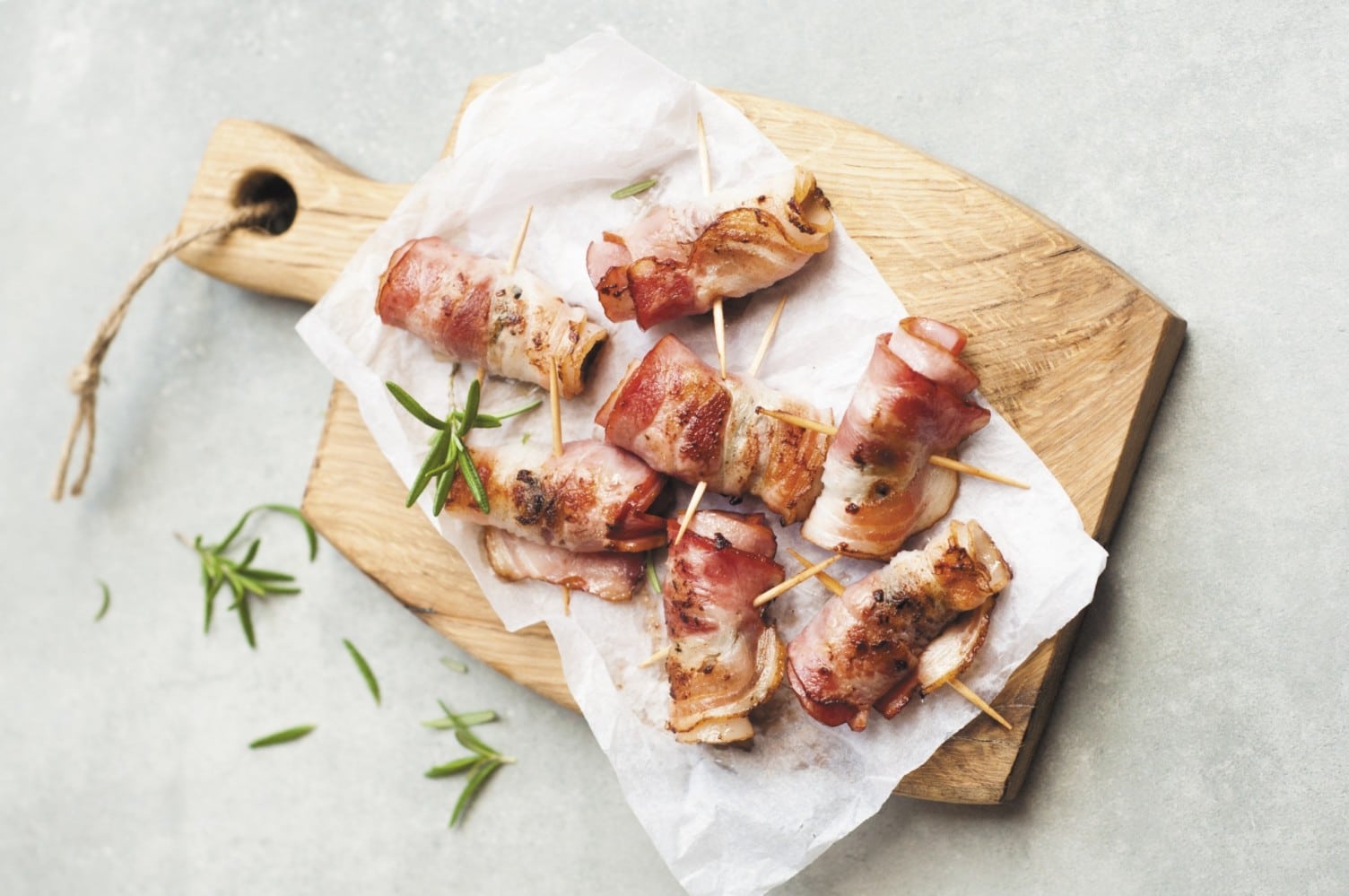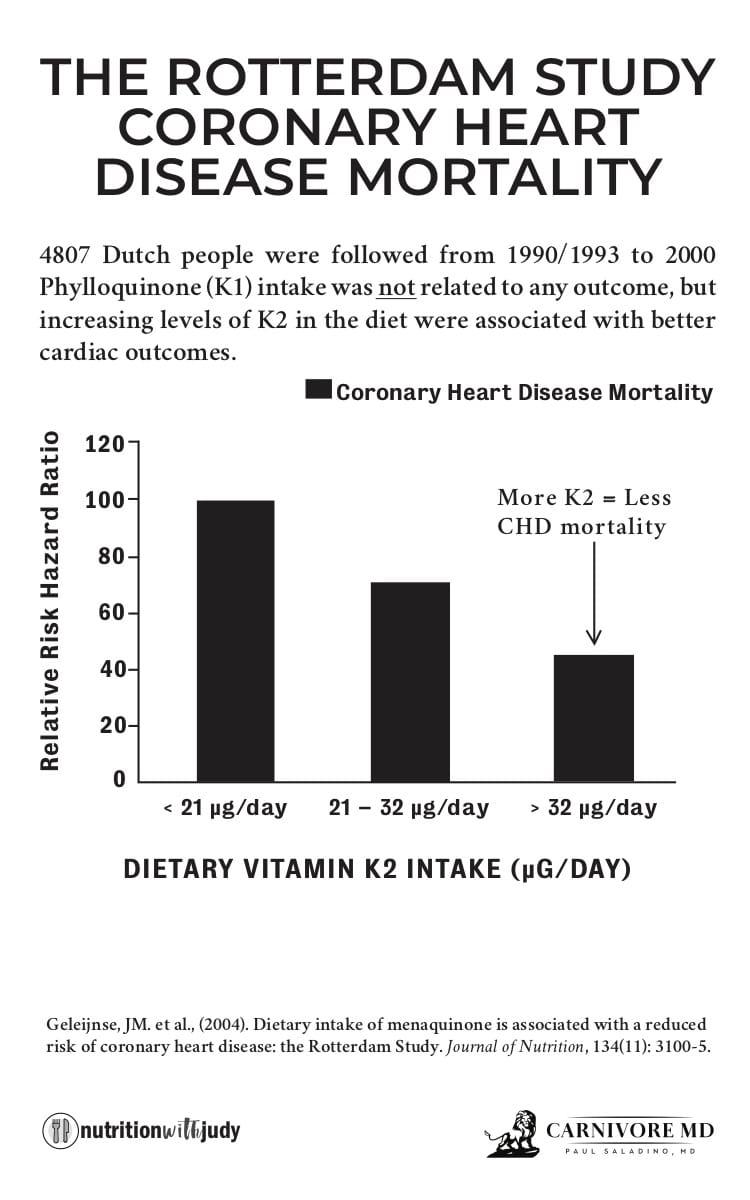
This is Part 2 of our Carnivore Diet miniseries by guest author Dr. Paul Saladino, a functional medicine doctor who researches the link between nutritional biochemistry and chronic disease. His research has led him to adopt and advocate a 100% Carnivore Diet, which you can read about in his new book, “The Carnivore Code: Unlocking the Secrets to Optimal Health by Returning to our Ancestral Diet.”
Read Part 1: Is the Carnivore Diet Healthy? Not Unless You Do This
How to Eat Organ Meats: Beginner to Advanced
by Paul Saladino, MD
Where should you start on your quest to become a nutritional superhero by eating more organs? Most people find that it’s easiest to start with meats resembling what you’re used to, and branch out from there.
Start with heart for coQ10 and riboflavin
 The first organ that most people start with is heart. You’ll certainly know that your heart resides in your chest, and does the Herculean task of pumping blood throughout your body for every second that you are alive. That’s a lot of reps!
The first organ that most people start with is heart. You’ll certainly know that your heart resides in your chest, and does the Herculean task of pumping blood throughout your body for every second that you are alive. That’s a lot of reps!
In order to accomplish this, our hearts are highly concentrated with mitochondria (little cellular powerhouses), and the special nutrient CoQ10, an antioxidant that helps your cells produce energy. It’s kind of a big deal — you’d die instantly if your mitochondria suddenly stopped pumping out this amazing molecule.
Why you need coQ10
When you don’t have enough CoQ10, you feel it. You’ll end up with fatigue, muscle weakness, memory problems, and low libido. This is exactly what happens when you start taking statins, a class of medications that lower cholesterol. Statins block the upstream synthetic pathway for CoQ10, and other important molecules.
We make some CoQ10 on our own, but as we age, this production seems to lag, and obtaining this nutrient from our diets becomes increasingly important.
What’s the best source of CoQ10? You guessed it, heart! I’ve seen a lot of labs from carnivores, and invariably they have extremely robust levels of CoQ10 without supplementation.
Heart contains riboflavin for methylation and metabolism
Heart is also a rich source of a super important B vitamin that nobody’s talking about, but that is crucial for proper energy production and methylation. I’m talking about vitamin B2, or riboflavin. Every 4oz of heart has about 1mg of riboflavin.[ref url=”https://nutritiondata.self.com/facts/beef-products/3464/2″] this is double the amount in muscle meat.
This is an important B vitamin to get enough of. As I suggested earlier, getting enough riboflavin is crucial for proper methylation. Methylation is a complex topic, but here are the Cliff’s notes. Many people have heard of the enzyme, MTHFR (methylenetetrahydrafolatereductase — now, say that five times fast). MTHFR is an enzyme that converts one form of folate into a very specific form of folate (L-methylfolate) that is used in the energy production cycle of every cell in your body. Over half of people have an MTHFR gene mutation that affects their ability to produce energy.
In people with the mutation, the MTHFR enzyme is generally sluggish at making this conversion and levels of L-methylfolate can decline leading to higher levels of homocysteine, which is not a good thing.
But, there’s hope! Depending on which MTHFR mutation you’re dealing with, simply adding riboflavin is enough to restore normal methylation, which restores normal energy production. Instead of the RDA amounts of around 1mg per day of riboflavin, those with the MTHFR mutation are probably better off with 2-3mg of riboflavin (or even more) on a daily basis, and viola, good old MTHFR is back to humming along at normal speed.
If you really want to dig into the science check out this paper which illustrates it nicely. The take home message is that you want to make sure you are getting enough riboflavin to optimize your biochemistry.
How to eat heart
Start with beef heart because it’s large and easy to work with. There’s a good chance you’ll have to venture beyond your grocery store to find a beef heart, but it’s worth the extra stop on your grocery run — promise. Reach out to your local butcher shop for this, and ask for organic.
Bonus: organ meats are often cheaper than muscle meats because people are afraid to eat them. Score!
First, give it a rinse and pat it dry. Most likely, your butcher will have removed the super tough gristle in the middle, so it will open up like a steak. You’ll see fat, a silvery casing, and likely some arteries. Don’t let that intimidate you — it’s all food. Trim it with a sharp knife if you want, but remember:
- Your brain, bone marrow, and cell membranes love organic, grass-fed animal fat
- Connective tissue is collagen, and the more collagen the better, especially as you get older
- You won’t notice the silver skin once it’s cooked
I’d recommend you leave it all intact.
Next, drop a good amount of cooking fat into a hot pan (I’m partial to lard or tallow) and lightly cook it like a steak. If you want to grill it, follow this video to minimize the negative effects of grilling.
Enjoy! It’s similar to steak in taste and texture, and it’s gorgeous when you slice it. That’s why it makes a great intro to organ meats for beginners.
Moving on to more advanced organ meats

Liver
Liver is a food that some of us may have grown up with, but to most westerners it’s a foreign thing which may even evoke a few traumatic memories. In those who have grown up eating liver, and who are accustomed to its strong taste, this organ is often one of the favorites, and regarded as a true treasure. For others, it takes some time to get used to, but a couple tries and you’ll acquire a taste for it.
Let’s be honest. Of all the organs, liver is probably the strongest tasting, and the hardest for many people to stomach, but trust me, it’s worth it. As I mentioned earlier, liver is a great source of riboflavin. In fact, it’s probably the single best source of riboflavin out there. Yup, liver is the Jedi of organ meats when it comes to riboflavin, and a number of other nutrients too! Just 3oz of liver has a whopping 3mg of riboflavin in a highly bioavailable form. This is truly unicorn superfood status.
Vitamin K2: the vitamin that fights heart disease
The wonders of liver don’t stop at the B vitamins. As you can see from the graphic above, liver is incredibly rich in a number of nutrients beyond riboflavin. Vitamin K2, also known as menaquinone, gets a lot of attention these days, and is one of these. Vitamin K2 is critical for proper handling of calcium in our bodies, and many studies ( have(rotterdamk2) shown a very clear drop in cardiovascular disease with higher intakes of vitamin K2 from animal foods.
Interestingly, the plant form of vitamin K, K1 or phylloquinone, was not associated with better cardiac outcomes at all! Other organs rich in vitamin K2 include animal fat, muscle, and kidney. More on the unique benefits of fat and kidney below. I may be a bit biased, but I’d say there’s a theme here: animal foods are the real superfoods!
Sadly, the USDA has not tested many foods for vitamin K2 levels, only vitamin K1, and they report this as “vitamin K.” Vitamins K1 and K2 have vastly different functions in the body, which causes a lot of confusion. Don’t be misled by this into thinking plant foods are better sources of vitamin K2 than animal foods. This just isn’t the case.
As we have seen in the studies cited above, there’s a good amount of evidence that K2 is the valuable form of this vitamin, rather than K1, and K2 is mostly found in animal foods, with the exception of rare fermented plant foods like natto. There are a few good resources out there for levels of K2 in foods, like this [one], but many foods still have not had levels of vitamin K2 measured, like grass-fed animal fat.
Copper: a little known mineral that fights oxidative stress
Liver, the superhero, is also a unique source of copper. This is a nutrient that doesn’t get into the limelight as much as many others, like it’s cousin zinc. But, it’s got its own superpowers too.
We know that zinc is important for optimal levels of testosterone, and for the functioning of a family of enzymes with “zinc finger” domains that can only assume their proper 3-dimensional shape when we have enough of this mineral.
Zinc is abundant in many organs including muscle, heart, and liver, but if we eat too many zinc-rich foods without balancing these with copper, we can become deficient in the latter. This is because both copper and zinc are stored in cells that are sloughed off on a continual basis. Excess zinc, either from supplements or food, without a balanced amount of copper, will lead to copper deficiency as the zinc and copper are both excreted together in their bound form. Though rare, copper deficiency is no joke, and has been associated with balance and proprioceptive deficits, as well and anemias.[ref url=”https://www.ncbi.nlm.nih.gov/pubmed/3335323″][ref url=”https://www.ncbi.nlm.nih.gov/pubmed/4026086″]
Liver is also rich in many of the other B vitamins, choline, iron, selenium, manganese, pre-formed vitamin A, and even vitamin C! Yes, contrary to what you may have heard, animal foods contain an adequate amount of vitamin C. The cliff notes version is that animal foods contain enough vitamin C for our bodies to functionally optimally, as long as you’re eating the right parts.
The take-home message here remains the same: we wouldn’t function best on a diet in which liver is the only organ meat, and should not make muscle meat the only organ we include in our diets, either. Muscle is great for a lot of things and is rich in zinc, selenium, and some of the B vitamins. If muscle is the only animal organ we eat, however, we’ll be missing out on the best sources of riboflavin, folate, copper, choline, CoQ10 and a host of other nutrients.
The most prized organ meat in human history

This organ is none other than … drumroll please … fat!
Just like we aren’t used to thinking about muscle as an organ, westerners don’t often think of fat as an organ, or even as something particularly valuable, but this is where we are very wrong.
In “The Fat of the Land,” Stefansson states of the Inuit (p118)
“While meat of any kind is in great demand, it is interesting to note that the following are favorite cuts:
-
Brisket of beef with the fat and cartilages.
-
The skin and subcutaneous fat of a wart hog. Pig skin is never saved for rawhide and leather. It is too valuable as food, and is eaten after singeing off the hair, and prolonged boiling. Plump cow skin is similarly eaten…
-
The hog’s head; brains and fat are both delicacies.
-
The liver of any animal.
-
The hands and feet of monkey because of the fat content.”
Also notice within this quote that the Inuit gave special merit to the connective tissues of animals in addition to fat. Dave and I speak about the importance of collagen as a source of glycine in the recent podcast we did, but it’s hard to overemphasize this point.
Anthropologist Speth came to the conclusion that:
” …fat, not protein, seemed to play a very prominent role in the hunters’ decisions about what animals (male vs. female) to kill and which body parts to discard or take away”
Further [Lee] writes about the !Kung of the Kalahari:
“Fat animals are keenly desired, and all !Kung express a constant craving for animal fat”.
About the James Bay Cree, [Rockwell] writes:
“The Cree considered fat the most important part of any animal. One reason they valued bears above other animals was because of their body fat.” Coote and Shelton (36) report a similar attitude among the Yolngu of Arnhem, Australia, saying that “Animals without fat may indeed be rejected as food.”
My favorite anecdote about fat comes from Andean Indians who use the word “Wiraqocha”, which translates as “a sea of fat,” as a greeting and a blessing. The same word is also the name of one of the main deities within Mayan society.
Why has fat always been so prized? Clearly this was for its high caloric content, but just like the other organ meats, animal fat from well-raised animals has many unique nutrients.
As mentioned earlier, vitamin K2 is a very important nutrient that has a number of forms (MK4-MK-11), most of which are found in animal foods. The richest measured sources of K2 in animal foods are liver, and the fat of duck and emu. It does not appear that grass fed beef fat has had its K2 content measured reliably, but since K2 is a fat soluble vitamin, I’d be willing to bet that it’s quite high in this vitamin, just like other sampled animal fats.
Fat from grass-fed animals is also a source of other fat-soluble vitamins like vitamin E. [Studies] have consistently shown that grass-fed meat is higher in many nutrients like vitamins E, C and glutathione (a major cellular antioxidant), but this is just what has been found in the water soluble fraction — the actual meat, rather than the fat. Just like with vitamin K2 vs K1, there just haven’t been enough detailed studies of the nutrients present in animal fat to really know what’s in it. Since vitamin E, like vitamin K2, is a fat-soluble nutrient, I would expect this to be present in robust amounts in animal fats.
How would one go about eating animal fat? The easiest way would be consuming the fat from the fattier cuts of meat you’re already eating. Grass-fed meat is leaner than grain-fed meat in general, but much of the fat surrounding our meat is trimmed off ahead of time by butchers. These trimmings make a great source of fat to complement the other organs in our diet.
The richest source of fat on most animals is the fat around the kidneys, or perinephric fat, also known as suet when it’s from cows. Many companies like White Oak Pastures and US Wellness meats sell both trimmings and suet from grass-fed animals.
The key here is that humans have always craved fat, because it’s a critical nutrient for energy. Human metabolism doesn’t run well on protein, so the only other option is carbohydrates if we aren’t getting enough fat. Those interested in ketogenic, carnivore or low carb diets generally look to avoid carbohydrates, and in these situations, if we only consume protein we’ll end up feeling pretty miserable.
Nevertheless, the debate between high carb vs high fat rages on. I don’t think all carbs are bad for all people, but it seems abundantly clear that low carbohydrate diets like carnivore, keto and low carb versions of bulletproof, have helped a lot of people lose weight, and decrease inflammation.
Ligaments, tendons, and other “gristle” is packed with collagen
Connective tissue is another organ that is often neglected in western diets. Rich in the amino acid glycine, collagen in our diets is needed to make new collagen in our own bodies, and to make glutathione, a hugely important molecule involved in the process of maintaining redox balance. I’ll talk more about how to get collagen in our diets in the last sections of this post, but most readers will be familiar with bone broths and collagen powders, which are great sources of this nutrient, as are tendons and skin.
The varsity organs: kidney, brain, pancreas, spleen
Ok, so you’re sold. You are ready to pledge your allegiance to the Cool Kids Organ Eaters Club, and want to know about some other organs that are also radical. So far we’ve talked about heart as a good introductory organ, followed by the superhero liver, and the traditionally sacred fat, in addition to the organ of muscle which most of us have eaten with great zeal previously in our lives.
What are some other organs we might consider including in our diets to really maximize nutrient content and become the demigods we have every right to be? After heart, liver and good source of fat, the next organ I would explore is kidney. Our old friend Viljhjamur Stefansson noted that of all the organs, kidney held a special for the Inuits stating (p87),
“The kidneys are usually given to children, somewhat as if they were candy.”
I’m not going to go as far as saying kidneys taste like candy, but they are more mild than liver and incredibly nutritious. Kidneys are also very high in vitamin riboflavin, proudly packing 3mg in 3oz, just as much as liver.
These little nutrition bombs also pack a good amount of vitamin K2, approx 250ug in 3oz, again mirroring the content in liver. Kidney is also a great source of vitamin C from animal foods. From what I can see, liver and kidneys are truly the dynamic duo of organs! Batman and Robin? Iron Man and Thor? Wonder Woman and Captain Marvel? Luke and Ren? You decide!
Beyond Kidney there are many other organs that can be eaten from a nose to tail perspective. There’s brain, of which the Inuit were also extremely fond(p 50) ,
“Among the Mackenzie River Eskimos, the head was considered the best part of the caribou—not just the tongue and the brain, though both were relished, but the head as a whole. Among the best parts of it were the fat behind the eye and the meat, a blend of lean and fat, inside the angle of the lower jaw.”
The notion of eating brain may gross a lot of people out, and this isn’t exactly an organ that is available in most super markets, but brain is actually quite mild in flavor. Eating brain definitely makes you an instant card-carrying member of the Cool Kids Organ Eaters Club!
It will come as no surprise that brain is a great source of highly bioavailable omega-3 fatty acids, and unique compounds like sphingomyelin not found outside of neural tissue. Whenever the idea of eating brain is brought up, people inevitably worry about mad cow disease. Most of the brain available for consumption is actually lamb brain, which doesn’t carry the virus that causes mad cow. Mad cow disease is also very, very rare these days, and there has never been a documented case in the US.
Let’s round out the list of varsity level organs with things like thymus and pancreas (colloquially know as “sweetbreads”), intestine and spleen. If you are really adventurous you can obtain all of these from White Oak Pastures, and they’ll teach you the Cool Kids secret handshake. That’s a joke — the handshake doesn’t exist, but I think we should make one up just for us.
Spleen is the richest source of iron in our bodies, so those with iron deficiency might be particularly interested in this. Pancreas has been eaten by traditional cultures to aid with digestion. The thymus is an organ of the immune system and is rich in vitamin C, as well as pantothenic acid, aka vitamin B5. See! There’s a veritable cornucopia of nutrition to be obtained from organs!
How much of these organs should we be eating?
My simple answer to this question is that some amount of organs is better than none, and beyond that more variety is probably better. We might take some indication of how much of these organ meats we should be eating by looking at their relative proportions in animals.
Generally speaking, muscle and fat make up the vast majority of the organs on ruminant animals like cows and deer. Visceral and thoracic organs are about 10-20% of the weight of these animals, and tendons/ connective tissue probably a similar amount. To me this translates to eating organ meats in moderate quantities, perhaps 1/5-1/10th of the amount of meat and fat that we have in our diets.
In my own nose-to-tail carnivore diet, I eat about 3-5oz of a mix of organ meats (other than muscle and fat) per day on a rotating basis. On a weekly basis I might eat 8oz of liver, 12oz of kidney, and a few ounces of brain, thymus, pancreas, spleen and even testicle, depending what I have available. This isn’t to say that’s what you should do, however. Find what’s reasonable for you, and remember that I am probably the president of the Cool Kids Organ Eating Club.
If you’re interested in learning more about me, and how a nose-to-tail carnivore diet could turn you into a Super Human, check out my website. There you will find blog posts about how to start a carnivore diet, what to eat on a carnivore diet, and many other resources. There are also links to my podcast, Fundamental Health, and the many podcasts I have been on previously, discussing the details of the carnivore diet, many of which I didn’t delve into here.
I also wrote a a book, “The Carnivore code: Unlocking the Secrets to Optimal Health by Returning to our Ancestral diet.” Which is out NOW (www.thecarnivorecodebook.com) Below you will find a graphic from this book summarizing my perspective on relative proportions of various foods that are important to include in the ideal version of a nose to tail carnivore diet.
Thanks to Dave and the staff at Bulletproof for the opportunity to create guest post. I deeply hope that it is helpful for you all. Stay radical!












